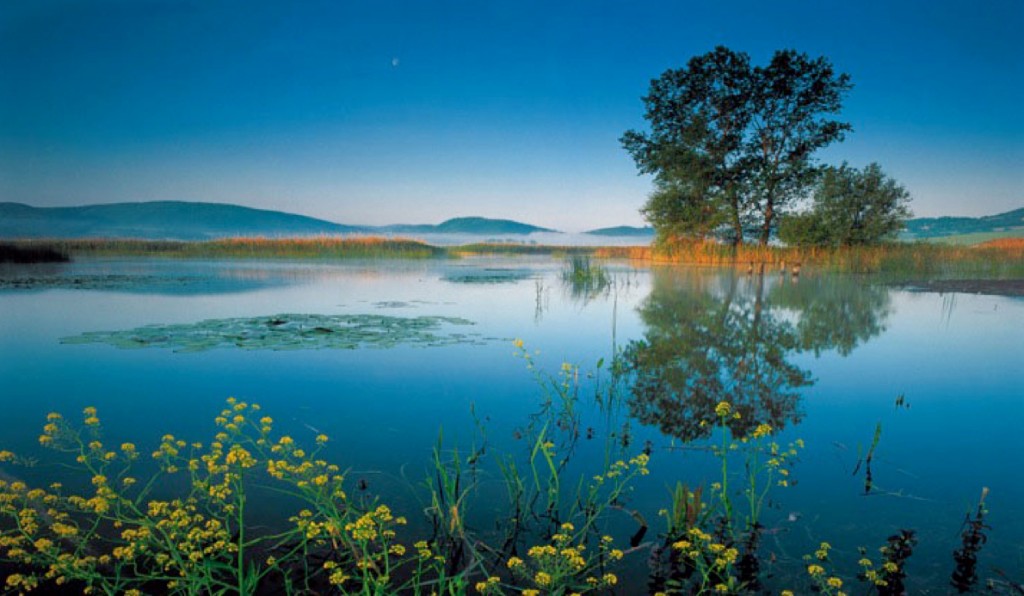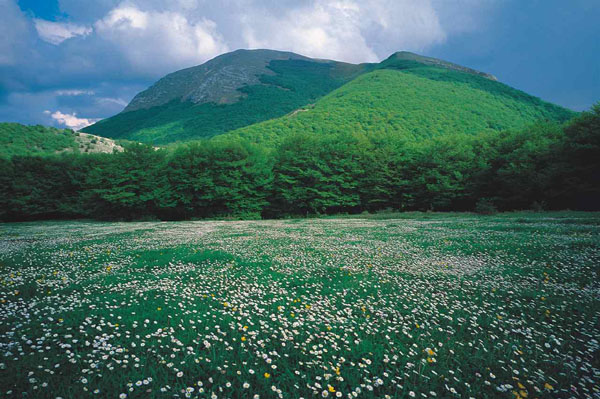
Colfiorito Park
This post is also available in:
 Italiano (Italian)
Italiano (Italian)
Colfiorito is the smallest Regional Park in Umbria. It was established in 1995 to safeguard the local marshland and its valuable ecosystem.
In the 1970s, the naturalistic and phytogeographic importance of this basin was officially acknowledged by the botanist Francesco Pedrotti, from the University of Camerino; a first request for the protection of the swamp was actually made in 1969 and based on the rich inventory of biotopes to be protected in this part of Italy. The park was then finally created and placed under a regional protection law.
The local flora (a term which relates only to vascular plants, thus excluding algae, fungi, mosses, lichens, etc), appears abundant in many different environments within the park:
Lake vegetation:
white water lily (Nymphaea alba) and other floating or submerged hydrophytes such as watermilfoil (Myriophyllum verticillatum, Myriophyllum spicatum), pondweed (Potamogeton crispus, Potamogeton pusillus, Potamogeton lucen ), bladderwort (Utricularia vulgaris) – a carnivorous species like few others in Italy, as well as smaller communities of water smartweed Polygonum amphibium.
Marsh vegetation:
marsh reed dominates, together with canary grass, great manna grass, narrow-leaf cattail, lesser bulrush, club-rush, and common spike-rush.
Marsh grassland vegetation:
Abundant sedges (Carex gracilis, Carex elata, Carex riparia), Ranunculus lingua, Iris pseudacorus, Butomus umbellatus.
Wet grassland vegetation:
Ranunculus velutinus, Hordeum secalinum, Deschampsia coeritosa, and Carex distans.
Vegetation of peaty grasslands:
following a drastic reduction in the 1960s – due to poplar reforestation, peat removal and intense ploughing, the vegetation can be found only in the south-western part of the swamp (small areas with layers of peat); it includes Carex panicea, Carex acuta, Carex hirta, Anacamptis laxiflora, Epipactis palustris, Eriophorum latifolium, Ophioglossum vulgatum, Menyanthes trifoliata, Equisetum palustre, Centaurea jacea, and Valeriana officinalis.
Pasture vegetation:
It is mainly made of erect brome (Bromus erectus) and tor-grass (Brachypodium rupestre); it also includes Briza media, Luzula multiflora, Trifolium pratense in cooler and flat areas, and Asperula purpurea, Eryngium amethystinum, Centaurea rupestris, in the sunniest and sloping spots.
Shrub vegetation:
blackthorn (Prunus spinosa), spindle (Euonymus europaeus), buckthorn (Rhamnus cathartica), and hawthorn (Crataegus spp.). There are also broom, juniper (Juniperus oxycedrume, Juniperus communis), and the rare Cytisus sessilifolius.
Forest vegetation of deciduous trees:
hornbeams (Ostrya carpinifolia), Turkey oaks (Quercus cerris), and Italian maples (Acer opalus subsp. obtusatum).
Agricultural crops:
they include red potatoes and lentils, cereals and other legumes such as chickpeas and beans.
Among the weeds of the crops, there are poppies (Papaver rhoeas), stinking chamomile (Anthemis cotula), and cornflowers (Centaurea cyanus) .
Coniferous forest crops:
Black pines (Pinus nigra) prevail.
This post is also available in:
 Italiano (Italian)
Italiano (Italian)
Contatti
Via Adriatica (Area ex Casermette) - Foligno(PG)
0742 681011
mgpossenti@regione.umbria.it


